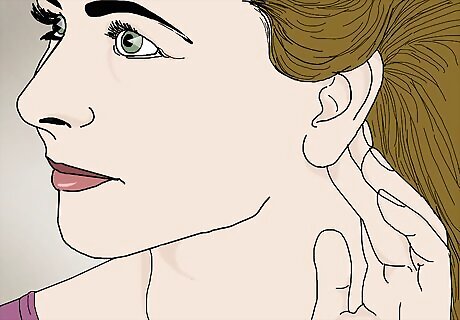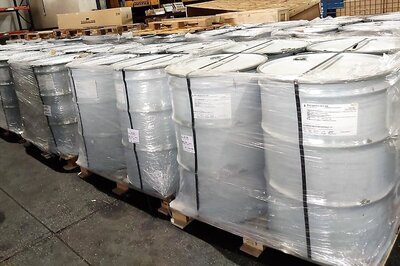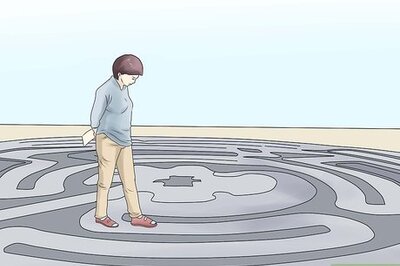
views
Getting Ready for a Piercing

Consider the commitment a piercing requires before getting it. Many people make a spur-of-the-moment decision to get a piercing, without taking into account the money and care that a body piercing requires. Before you go in to get your piercing, think about how long the piercing will take to heal and if it will interfere with the dress code at your job or school. You should also think about whether or not your piercing can be covered up easily if need be. That said, don’t put too much pressure on yourself. Even if you get the piercing and decide you don’t like it as much as you thought you would, you can always remove the jewelry once it’s healed and let the piercing close up.

Get a doctor’s note if you have a serious medical condition. If you have a condition or are taking medication that could affect your blood’s clotting ability, make sure to check with your doctor beforehand and obtain a note. Let your piercer know about your condition and show them the doctor’s note before you start the piercing process. For example, if you have diabetes, a bleeding disorder, a heart condition, or are currently on antibiotics, you will need to show the piercer a doctor’s note. If you’re currently on any medications, you should check with your doctor just in case.

Don’t drink alcohol or caffeine before or right after your piercing. This can cause blood thinning and lead to excessive bleeding, bruising around the piercing site, and extra pain. Drinking directly afterwards can also slow down the healing process. To be safe, avoid drinking any alcohol until a few days after you’ve had the piercing done. It’s also technically illegal for piercers to pierce anyone under the influence, so make sure to save the celebratory drinks for later! With oral piercings, it’s especially important to avoid alcohol for a few days. Alcoholic drinks can irritate the piercing and cause swelling, especially when you’re dehydrated. EXPERT TIP Karissa Sanford Karissa Sanford Body Piercing Specialist Karissa Sanford is the Co-owner of Make Me Holey Body Piercing, a piercing studio based in the San Francisco Bay Area that specializes in safe and friendly body piercing. Karissa has over 10 years of piercing experience and is a member of the Association of Professional Piercers (APP). Karissa Sanford Karissa Sanford Body Piercing Specialist Our Expert Agrees: While keeping a new piercing clean is important, the healing process is also affected by other factors, like what you eat and drink or how much rest you get. Make sure to drink lots of water and get lots of rest in the days leading up to getting a piercing and the days after for the best results.

Eat a meal at least 6 hours beforehand to keep your blood sugar up. If you skip a meal and come to get pierced on an empty stomach, you’re more likely to feel dizzy and even faint. Make sure to eat a full meal 6 hours beforehand, and even have a small snack about 2 hours before the piercing, to keep your blood sugar at a healthy level.

Shower and dress in loose, comfy clothing before getting pierced. Not only is this healthier for the piercing and the healing process, but it’s also respectful to the piercer. Wash away any sweat, makeup, or grime lingering on the skin in the shower, then put on some loose, breathable clothes that let you access the piercing site easily. For example, if you’re getting your belly button or nipples pierced, you’ll need to wear something that you can easily slide out of the way, such as a loose shirt or tanktop. Showering beforehand is especially important with below-the-belt piercings. Make sure to wear a pair of comfortable underwear that you don’t mind getting stained. With oral piercings, make sure to brush your teeth as well.
Going to a Professional Studio

Call ahead to make an appointment. If the piercing studio is busy, they may not be able to take walk-ins. Instead of dropping in for an appointment, always call in first and talk to a piercer at the studio. This way, you can ask any preliminary questions you might have and confirm the date and time before coming in.

Choose a professional piercer to make sure the piercing is done safely. Professional piercers know to use sterile materials, practice safety procedures, give instructions for aftercare, and have a strong understanding of anatomy. If your piercer dodges questions, pressures you to get a piercing, or doesn’t keep a clean workspace, you should definitely find someone else. Check the reviews on Yelp before you go into a piercing studio. Look at what other people wrote about their experiences at the studio, especially with customer service, cleanliness, and professionalism. Look at the piercing studio’s website before you go in. Staff, rates, and general information should be presented in a professional, confident, and knowledgeable way.

Check with the studio beforehand if you have a metal allergy. Make sure they have a clean, professional environment and sells only hypoallergenic jewelry. You should also make sure they use sterile and nickel-free metal or surgical-grade stainless steel needles that come in sealed packages for piercing. If the studio is sloppy or sells jewelry with nickel, look for a new piercer. Common metal allergies include nickel, copper, cobalt, and certain alloys. If the studio uses piercing guns, ask them if the part that comes in contact with the person getting pierced isn't re-used on other customers. If you find that itchiness or a rash occurs within 12-48 hours of wearing earrings or necklaces, you likely have a metal allergy. Contact your doctor for further testing and treatment, if needed.

Choose quality, hypoallergenic jewelry instead of nickel or brass. This metal will be in contact with your body for a long time, so it’s important to choose high-quality materials! Look for jewelry made of hypoallergenic materials, such as acrylic, titanium, or surgical-grade steel. Make sure that the jewelry backings also are made of hypoallergenic materials. Other safe metals options include stainless steel, palladium, platinum, 18-karat yellow gold, nickel-free yellow gold, and argentium sterling silver. Avoid jewelry made of alloys with nickel and brass. These can turn your skin green or cause serious allergic reactions. Keep in mind that surgical-grade stainless steel may contain a little nickel, but it's generally considered hypoallergenic for most people.

Ask your piercer any questions you might have afterward. Many piercers say that the only bad questions are the ones you don’t ask. After the piercing, your piercer should provide you with basic information about the healing time and aftercare instructions. If you have any other questions or concerns that haven’t been answered, now is the time to ask! For example, you could ask about what foods to avoid with an oral piercing. You could also ask about what you should do if you piercing site starts swelling.
Cleaning and Aftercare

Clean your piercing once a day to prevent infection. Some of the most common mistakes that people make after getting a piercing are cleaning it too often or not cleaning it enough. Once a day should be enough, unless your piercing becomes infected. If you notice any signs of infection, start cleaning your piercing 2-3 times a day until the infection goes away.

Use a gentle saline solution to clean your piercing. You can either purchase saline solution or make your own by mixing 0.25 teaspoons (1.2 ml) of sea salt with 8 fluid ounces (240 ml) of warm water until it dissolves. Use a Q-tip to apply the saline solution to both ends of the piercing, wiping away any buildup or grime. Rinse away any residue with warm water, then pat the area dry. If possible, it’s even better to let the whole piercing soak in a small cup of saline solution for a few minutes. For example, you can use this method on ear, nipple, and lip piercings. Make sure not to clean your piercings with harsh solutions like rubbing alcohol or hydrogen peroxide. A gentle saline solution, or even gentle hand soap, will disinfect and soothe the piercing site without irritating it.

Don’t twist or tug on your jewelry often while it’s healing. Not only does this keep the piercing from healing properly, it transfers oil and dirt from your fingers to the piercing. Only twist and turn slightly while cleaning, as directed by your professional piercer. For example, you shouldn’t twist, turn, or tug on nipple piercings at all. In fact, you shouldn’t touch the piercing besides washing it gently in the shower, for several weeks. Genital piercings are also extremely sensitive to tugging and irritation. You’ll need to wait to have sex for 6-10 weeks after having the piercing done.

Keep your original piercing in for the directed amount of time. Changing out your jewelry too soon is a common mistake that many people make, and it can lead to infection and keep the piercing from healing properly. Make sure to follow your professional piercer's instructions for how long to keep the jewelry in.

Monitor your piercing closely until it heals to prevent health risks. Many people ignore or forget to check for warning signs like redness, swelling, or more excessive discharge. Check your piercing once a day for any issues or concerns. Each body piercing will have a different healing time, so make sure you know how long you’ll need to monitor the piercing. For example, above-the-lobe ear piercings generally take 12-16 weeks, belly buttons take 6-12 months, nipples take 6-8 weeks, noses take 12-24 weeks, and oral piercings take 6-8 weeks.

Call your doctor if you notice any major issues with your piercing. If you have a persistent infection or your piercing is causing you pain, call your doctor. Infections, if ignored, can worsen and even become life-threatening. For example, if you see a red streak across your nipple, this likely means your nipple is rejecting the piercing. Contact your doctor to see if you need to have the piercing removed.
















Comments
0 comment